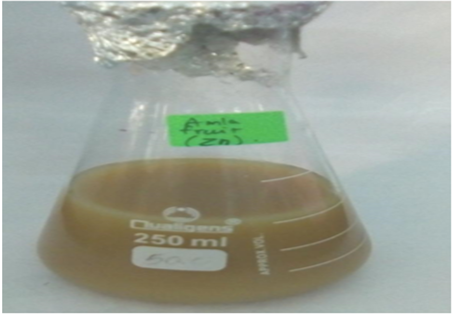Abstract
To study the antifungal activity of ZnO nanoparticles synthesised from amla fruit. Nanotechnology has offered great possibilities in various fields of science and technology. It has been playing a crucial role in the development of modern materials in recent years. The antifungal activity of ZnO occurs by the deformation of fungal hyphae leading to the death of fungal hyphae, which may lead to cellular destruction. Preparation of plant extract, Synthesis of nanoparticles, Characteristics of nanoparticles, Preparation of nanoparticles powder, Antifungal activity of nanoparticles against Candida albicans. The peak found in the spectroscopy indicates the formation of ZnO nanoparticle. It is clearly seen from the graph that increase in concentration results in an increase in antifungal activity. The antifungal activity, in this case, was proved with Aspergillus niger and Aspergillus terreus. The results conclude that ZnO nanoparticle can be used to prevent any antifungal diseases.
Full text article
Authors

This work is licensed under a Creative Commons Attribution-NonCommercial-NoDerivatives 4.0 International License.

